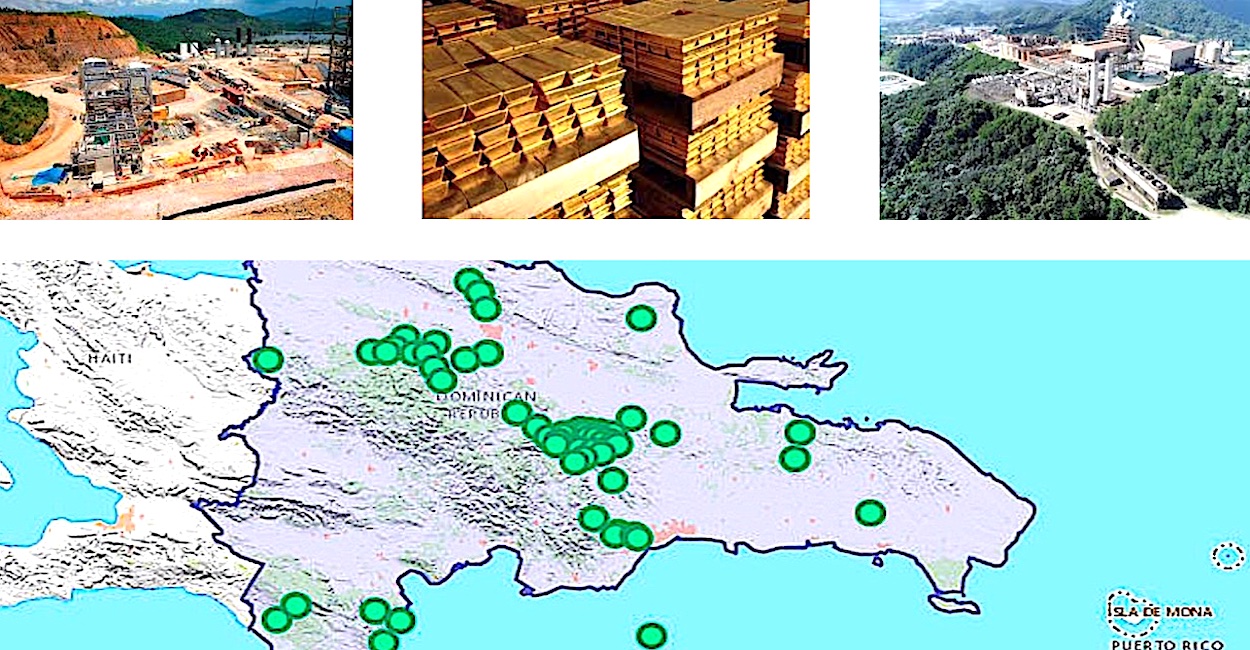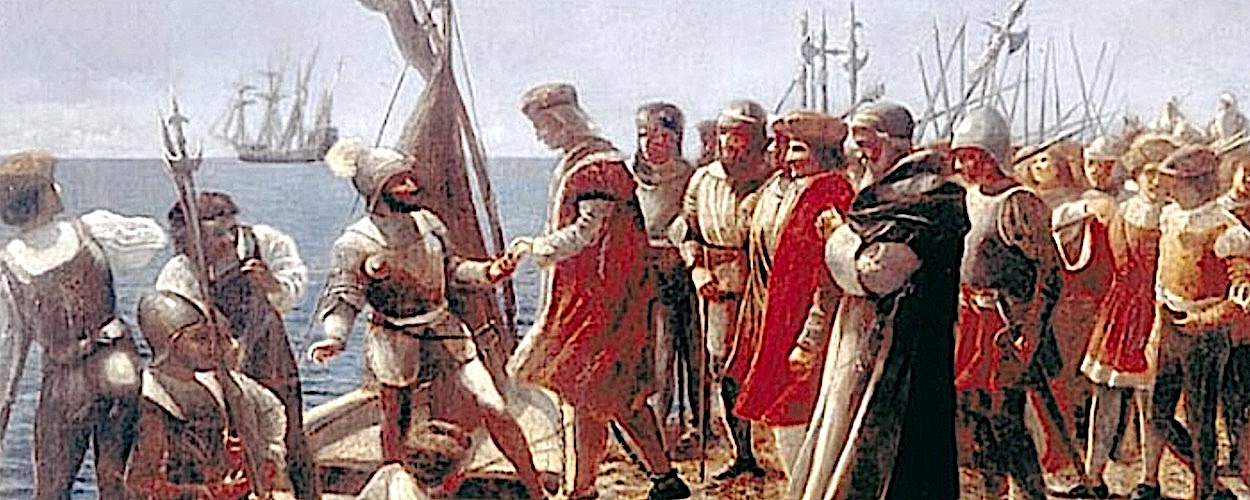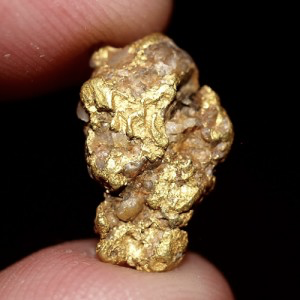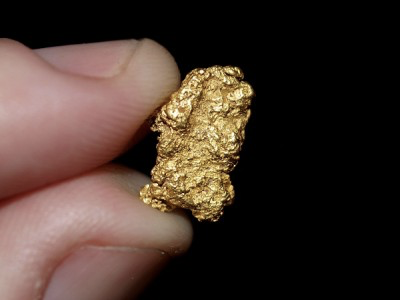
The Dominican Republic is a beggar sitting on a large gold mine...
iDominicanrepublic.com

⭐Dominican Republic has significant Mineral Wealth.
The Dominican Republic has deposits of Gold, Silver, Nickel, Copper and Bauxite, as well as Marble, Limestone, Gypsum, Granite and its aggregates. Miners also extracted Amber and Larimar from within the country.

The Dominican Republic has deposits of Gold, Silver, Nickel, Copper and Bauxite, as well as Marble, Limestone, Gypsum, Granite and its aggregates. Miners also extracted Amber and Larimar from within the country.
Larimar is only found in the Dominican Republic and is a very popular gemstones used in fine jewelry design.
Larimar is only found in the Dominican Republic and is a very popular gemstones used in fine jewelry design.
⭐ GOLD in the Dominican Republic
the Dominican Republic is “a beggar sitting on a large gold mine.”
Energy and Mines minister Antonio Isa Conde

Santo Domingo.- Energy and Mines minister Antonio Isa Conde on Sun. called the Dominican Republic “a beggar sitting on a large gold mine.”
He said the country isn’t aware that the abundant resources under its feet can break its chain of poverty and raise its quality of life.
He defended the sustainable extraction of metals, non-metals and hydrocarbons as long as it has the least possible impact on the environment and ensuring the fair distribution of wealth for the communities.
“The possibilities that this country has in mining development are quite great and not only in metal mining, but in hydrocarbons, oil and gas,” he said.
“If Dominican Republic’s current capabilities in metallic mining were to be developed the results in terms of exports and govt. income could double in a relatively short time.”
He added that the steps being taken with hydrocarbons are impressive. “We are at the door of the responsible and sustainable development of the exploration and exploitation of oil and gas, which means wealth.”
He said the country isn’t aware that the abundant resources under its feet can break its chain of poverty and raise its quality of life.
He defended the sustainable extraction of metals, non-metals and hydrocarbons as long as it has the least possible impact on the environment and ensuring the fair distribution of wealth for the communities.
“The possibilities that this country has in mining development are quite great and not only in metal mining, but in hydrocarbons, oil and gas,” he said.
“If Dominican Republic’s current capabilities in metallic mining were to be developed the results in terms of exports and govt. income could double in a relatively short time.”
He added that the steps being taken with hydrocarbons are impressive. “We are at the door of the responsible and sustainable development of the exploration and exploitation of oil and gas, which means wealth.”
⭐ MINING in the Dominican Republic
The history of the Dominican Republic has deep running roots based on the gold and mining industry.

The history of the Dominican Republic has deep running roots based on the gold and mining industry. Today there is a growing mining and exploration community made up of many explorers and three major mining companies.
⭐Barrick, with a 60/40% partnership with Goldcorp, operates the Pueblo Viejo gold mine. The mine has recently completed a major expansion and the current mine life is expected to be over 30 years. With Proven and Probable reserves of 16.2M ounces of gold at 3.2 g/t Au and Measured and Indicated Resources of 15M ounces at 2.42 g/t Au. (See Technical Report on the Pueblo Viejo Project, Sanchez Ramirez Province, Dominican Republic by RPA dated March 27, 2014 on SEDAR).
⭐Glencore (Previously Xstrata and Falconbridge) has been successfully exploiting nickel laterites in the Dominican Republic for almost 25 years
⭐Perilya operates the Cerro de Maimon Cu-Au-Ag mine.The gold exploration industry, although active for many years, has heated up following the Goldquest Romero discovery in 2012. This discovery has drawn attention to an under explored belt in the western part of the country known as the Tireo Formation where a number of companies are currently active. In early 2014,
⭐Barrick, with a 60/40% partnership with Goldcorp, operates the Pueblo Viejo gold mine. The mine has recently completed a major expansion and the current mine life is expected to be over 30 years. With Proven and Probable reserves of 16.2M ounces of gold at 3.2 g/t Au and Measured and Indicated Resources of 15M ounces at 2.42 g/t Au. (See Technical Report on the Pueblo Viejo Project, Sanchez Ramirez Province, Dominican Republic by RPA dated March 27, 2014 on SEDAR).
⭐Glencore (Previously Xstrata and Falconbridge) has been successfully exploiting nickel laterites in the Dominican Republic for almost 25 years
⭐Perilya operates the Cerro de Maimon Cu-Au-Ag mine.The gold exploration industry, although active for many years, has heated up following the Goldquest Romero discovery in 2012. This discovery has drawn attention to an under explored belt in the western part of the country known as the Tireo Formation where a number of companies are currently active. In early 2014,
⭐ GOLD Situation Today in the Dominican Republic
Dominican Republic’s Gold Production was reported at 33,910.000 kg in Dec 2017. This records a decrease from the previous number of 37,933.000 kg for Dec 2016. Dominican Republic’s Gold Production data is updated yearly, averaging 3,082.000 kg from Dec 1990 to 2017, with 21 observations. The data reached an all-time high of 37,933.000 kg in 2016 and a record low of 0.000 kg in 2007. Dominican Republic’s Gold Production data remains active status in CEIC and is reported by United States Geological Survey. The data is categorized under World Trend Plus’s Association: Metal and Mining Sector – Table WB.USGS.GOLD: Precious Metals: Gold: Production by Country or Locality.
⭐ GOLD History in the Dominican Republic
Due to the recorded events around gold exports to Spain, it is believed that the start of mining by Spanish explorers in the Dominican Republic was around 1494. The subsequent demand for gold and other precious metals began a rudimentary mining industry when these explorers began arriving in this region and started exploiting the resources here.

Gold in the beds and river terraces of the country was the only mineral resource exploited during pre-Columbian times. After a history marked by a limited development at an early stage, mining activity has now becomes an intensive development, especially with the remarkable rise in the price of gold over the past decade.
The regions of Miches and Monción are the main mining areas within the Dominican Republic, with hundreds of artisanal miners prospecting in this region.
The most important areas are of Miches in the eastern part of the country, the Rio Mao (Moncion) further west, the valley of the Rio Haina in Villa Altagracia, and San Francisco de Macoris in the Centre-North.
All these areas are accessible to and from the city of Santo Domingo.
An area near the southern town of Mina is known to have gold. Watercourses and river terraces along the Cuarón River and Arroyo Claro are known to have gold deposits. The alluvial gold of Monción belong to the Mao River Basin, which run west of the province of Santiago de los Caballeros, draining the northwest slope of the Central Cordillera. This river descends from 1.500 meters in height to 50 meters at its highest journey, flowing NNE and joining the Rio Yaque del Norte.
Due to the recorded events around gold exports to Spain, it is believed that the start of mining by Spanish explorers in the Dominican Republic was around 1494. The subsequent demand for gold and other precious metals began a rudimentary mining industry when these explorers began arriving in this region and started exploiting the resources here.

In the early years of the 16th century, more and more settlers came to the island in search of precious metals, which at the time were mainly found in the beds of rivers where placer deposits were easiest to recover. The local Arawak Indians that inhabited the islands were enslaved to work the mines on the island.
However, by 1525, much of the mining activity here was abandoned due to lack of labor. The Europeans traveling to the new world brought diseases that killed huge amounts of natives of the island, who had no resistance to these new diseases that they were exposed to. Additionally, several decades of mining meant that the easiest gold deposits had begun to be worked out.
Looking forward to 1921, American geologists surveying the country re-confirmed the presence of valuable mineral deposits in the Dominican Republic. More specifically, they concluded that there was gold and nickel in Bonao Cotui.
Gold, silver, copper, zinc, nickel and bauxite head the list of minerals in which search is exploring and drilling Dominican territory in several locations.

In 1975, a modern gold rush began in the country, with the exploitation of oxides of Pueblo Viejo by the foreign company Rosario Resourcesen, which was nationalized by the Dominican government in 1979. The government maintained the mine in operation until it exhausted oxides. To exploit sulfides, new technology was required because gold is no longer on the surface, but deeper.
During the 1960s, gold had a share in the GDP at just 2%, but managed to more than double its importance in the economy during the 70s, when the industry reached its golden age, achieving in 1976 represent 6.2% of GDP.
A major fault line runs along the islands of the Caribbean, which has been responsible for the geologic conditions that create the high concentrations of gold and nickel. There is still good potential for mining here and many junior mining companies are actively exploring within the country in search of new deposits that will be profitable to mine in the future
The regions of Miches and Monción are the main mining areas within the Dominican Republic, with hundreds of artisanal miners prospecting in this region.
The most important areas are of Miches in the eastern part of the country, the Rio Mao (Moncion) further west, the valley of the Rio Haina in Villa Altagracia, and San Francisco de Macoris in the Centre-North.
All these areas are accessible to and from the city of Santo Domingo.
An area near the southern town of Mina is known to have gold. Watercourses and river terraces along the Cuarón River and Arroyo Claro are known to have gold deposits. The alluvial gold of Monción belong to the Mao River Basin, which run west of the province of Santiago de los Caballeros, draining the northwest slope of the Central Cordillera. This river descends from 1.500 meters in height to 50 meters at its highest journey, flowing NNE and joining the Rio Yaque del Norte.
Due to the recorded events around gold exports to Spain, it is believed that the start of mining by Spanish explorers in the Dominican Republic was around 1494. The subsequent demand for gold and other precious metals began a rudimentary mining industry when these explorers began arriving in this region and started exploiting the resources here.

In the early years of the 16th century, more and more settlers came to the island in search of precious metals, which at the time were mainly found in the beds of rivers where placer deposits were easiest to recover. The local Arawak Indians that inhabited the islands were enslaved to work the mines on the island.
However, by 1525, much of the mining activity here was abandoned due to lack of labor. The Europeans traveling to the new world brought diseases that killed huge amounts of natives of the island, who had no resistance to these new diseases that they were exposed to. Additionally, several decades of mining meant that the easiest gold deposits had begun to be worked out.
Looking forward to 1921, American geologists surveying the country re-confirmed the presence of valuable mineral deposits in the Dominican Republic. More specifically, they concluded that there was gold and nickel in Bonao Cotui.
Gold, silver, copper, zinc, nickel and bauxite head the list of minerals in which search is exploring and drilling Dominican territory in several locations.

In 1975, a modern gold rush began in the country, with the exploitation of oxides of Pueblo Viejo by the foreign company Rosario Resourcesen, which was nationalized by the Dominican government in 1979. The government maintained the mine in operation until it exhausted oxides. To exploit sulfides, new technology was required because gold is no longer on the surface, but deeper.
During the 1960s, gold had a share in the GDP at just 2%, but managed to more than double its importance in the economy during the 70s, when the industry reached its golden age, achieving in 1976 represent 6.2% of GDP.
A major fault line runs along the islands of the Caribbean, which has been responsible for the geologic conditions that create the high concentrations of gold and nickel. There is still good potential for mining here and many junior mining companies are actively exploring within the country in search of new deposits that will be profitable to mine in the future
⭐ Detailed Information about Dominican Natural Resources

Some of the Dominican Republic's most important Natural Resources include beautiful Beaches and Scenery, the Arable Land, Gold and other Minerals, Fish, and Water among others.
iDominicanrepublic.com
⭐ Follow Us for the latest Dominican Information and News:

None of the other Caribbean Islands has such Charm, such an exotic and exuberant Zest for Living and such extensive,
palm fringed Beaches
iConsultingINT.com
iConsultingINT: We assist individuals und corporations who desire to invest, live and conduct business in the Dominican Republic, Florida and Switzerland.

We assist individuals und corporations who desire to live, to invest and conduct business in the Caribbean, Dominican Republic, Florida and Switzerland.



